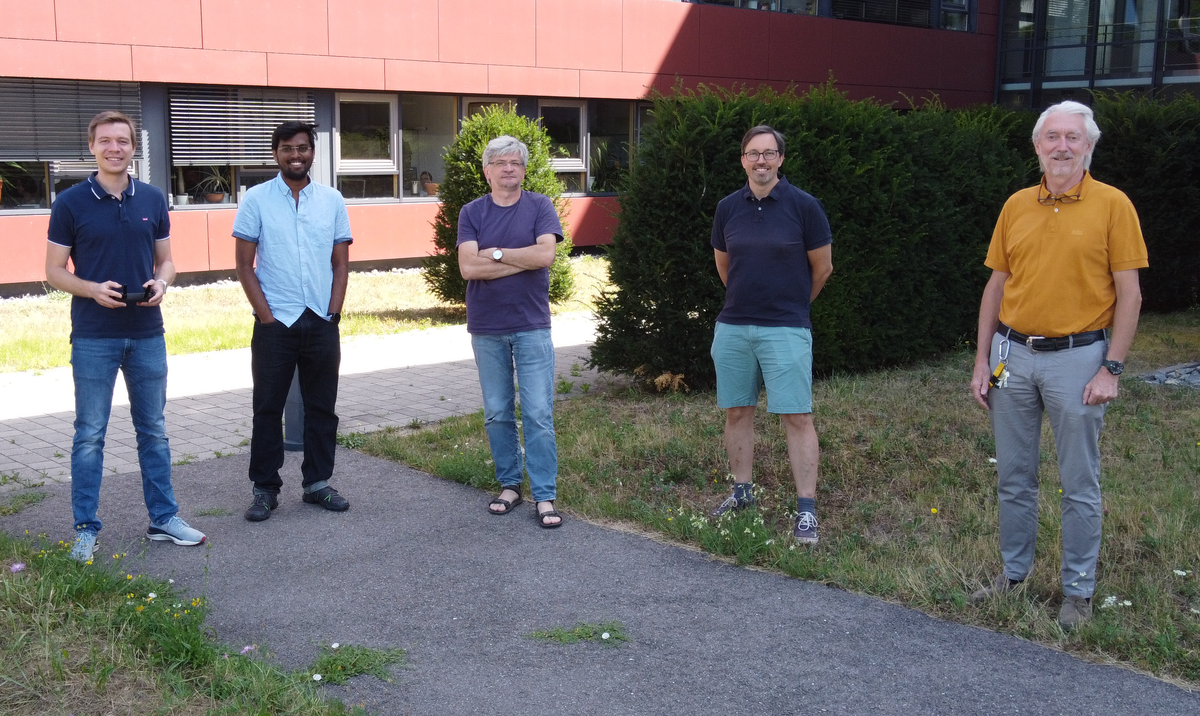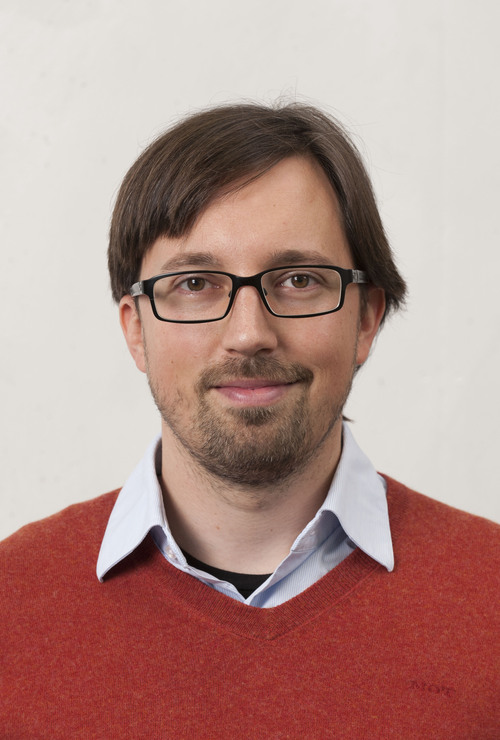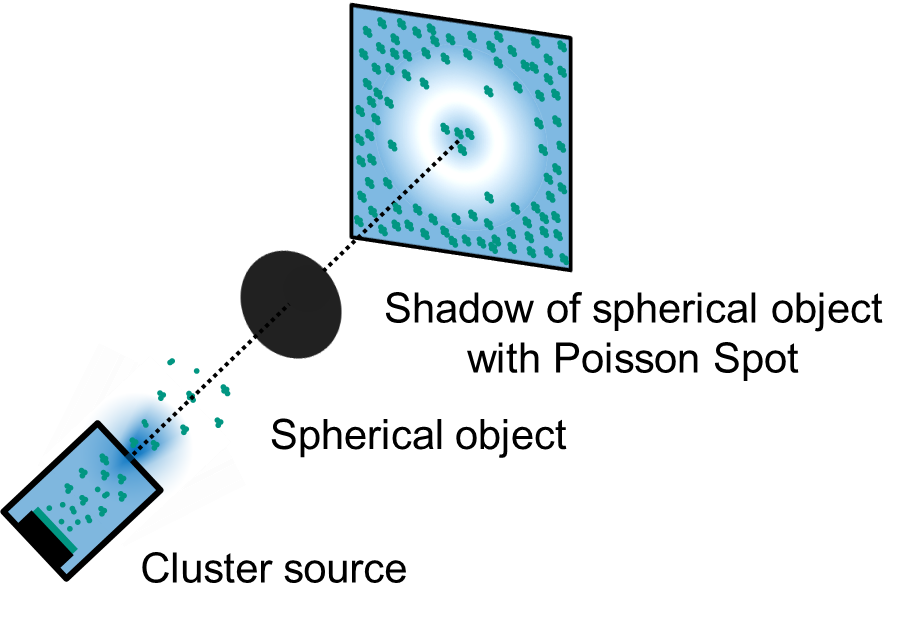Cluster-Assembled Materials
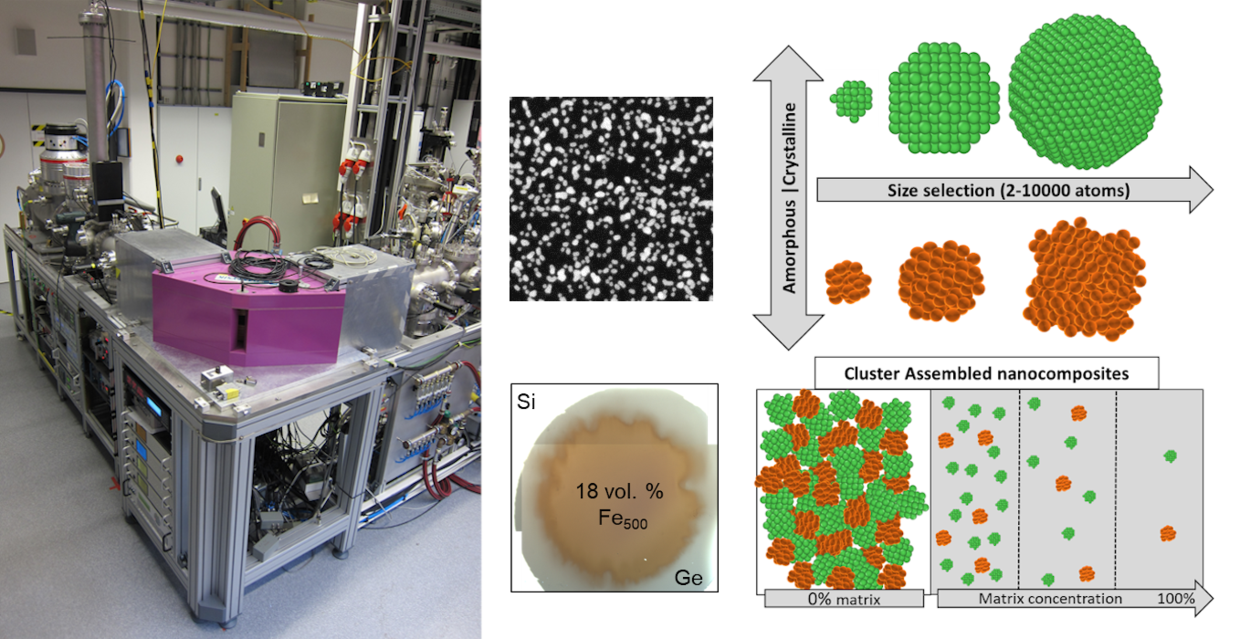
A central topic is the development of the size-selective cluster-ion beam deposition technique and its application in the synthesis of novel materials. For example, we study cluster-assembled metallic glasses as well as nanocomposite thin films. Properties that we are especially interested in include magnetism, electronic transport, and more recently catalysis.
In a second topic we focus on fundamental science, investigating the particle-wave duality of atoms and clusters by Poisson spot matter-wave diffraction.
Project Leader
Cluster-based Composites for Quantum Technology


Karlsruhe Institute of Technology (KIT)
Institute for Quantum Materials und Technologies (IQMT)
Hermann-von-Helmholtz-Platz 1
76344 Eggenstein-Leopoldshafen, Germany
Cluster-Assembled Materials
Agglomerates of two or more atoms are known as clusters. Clusters consisting of a limited number of atoms (usually between 2 to few thousands) exhibit unique properties that are highly size dependent. In general, this is due to their large surface-to-volume ratio combined with possible effects from quantum confinement. In recent years, various studies have shown that especially smaller clusters have unique electronic, magnetic and catalytic properties. These are often very different from the characteristics of the corresponding bulk material. Building materials from the bottom-up, by using clusters as precise structural units, has many potential technological applications. The following cluster based material classes are the primary subjects of our studies:
1. Cluster-Assembled Metallic Glasses
Amorphous structures prepared by deposition of non-crystalline clusters, so called cluster-assembled metallic glasses. Utilising either a single cluster type or several cluster types with different compositions, while systematically varying the cluster size and impact energy per cluster.
2. Cluster-Matrix Composites
Crystalline and amorphous cluster-matrix alloys/composites with variable concentrations of the size-selected clusters in a metallic, ionic or covalent matrix. The group is partially affiliated with the newly founded Institute for Quantum Materials and Technologies (IQMT). In this subgroup we investigate superconducting nanocomposites as prospective materials for superconducing circuits.
Cluster Deposition
For the synthesis of such cluster-based materials, we designed and realized a customized size-selective cluster-ion deposition system. The system is capable of producing a large range of cluster sizes from single up to several thousand atoms and provides a cluster beam with a narrow mass distribution of about 2 to 10%. It offers the ability to co-deposit mass-selected metallic clusters together with matrix materials and thus can be used to prepare a wide range of cluster-based materials.
In the cluster source inert-gas aggregation in combination with magnetron sputtering is utilized. Since the emerging clusters are largely ionized, they can be manipulated by electrostatic lenses and shaped into an ion beam. In a first stage behind the source, the clusters can be directly deposited to form pure cluster films with thicknesses of several 100 nm. In this setup, deposited masses can be inferred from a time-of-flight (TOF) mass spectrometer. Alternatively, a second stage located after a 90° sector magnet allows for deposition of precisely mass-selected clusters with controlled impact energies concomitantly with matrix materials deposited from up to two evaporators. Here, cluster films with thicknesses of the order of tens of nm are feasible.
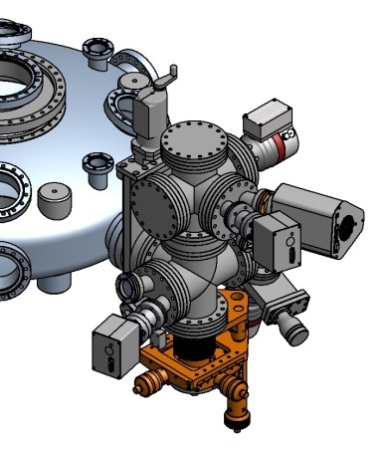
New Catalysis Chamber
In combination with our Inert-gas condensation (IGC) systems (see Nanoglass Topic), where milligrams of clusters can be produced (without mass selection) we can cover the whole range of cluster-based materials from nm thick, well defined thin films up to bulk cluster materials. The use of the CIBD system enables the preparation of alloy and composite systems, not possible by any other means. The primary research areas are:
- Cluster-assembled metallic glasses
- Cluster-assembled, thermodynamically frustrated nanocomposites
- Clusters for catalysis
- Cluster-assembled functional materials
Another major aspect of the system is that it is a part of a large integrated UHV lab with in-situ access to various synthesis and analysis methods, such as molecular-beam epitaxy (MBE), DC/RF-sputter deposition, pulsed-laser deposition (PLD), X-ray photo-electron spectroscopy (XPS), scanning-probe microscopy (AFM, STM) and low-energy electron-diffraction (LEED). Additional ex-situ atomic scale characterization is realised through atom probe tomography (APT) and transmission electron microscopy (TEM) which are a part of the Karlsruhe Nano Micro Facility (KNMF). Recently, we designed an operando characterization chamber for catalysis, which is being built as an additional facility to the integrated UHV lab to investigate catalytic capabilities of small supported clusters. This will allow us to determine the catalytic activity of the model catalyst systems realized by the CIBD setup without exposing samples to air.
References
C. Benel, T. Reisinger, R. Kruk, H. Hahn. Cluster-Assembled Nanocomposites: Functional Properties by Design. Adv Mater. 2018, 27, 1806634, https://doi.org/10.1002/adma.201806634
A. Fischer, R. Kruk, and H. Hahn. A versatile apparatus for the fine-tuned synthesis of cluster-based materials. Rev. Sci. Instrum. 2015, 86(2), 023304, https://doi.org/10.1063/1.4908166.
A. Fischer, R. Kruk, D. Wang, and H. Hahn. Magnetic properties of iron cluster/chromium matrix nanocomposites. Beilstein J. Nanotechnol., 2015, 6(1), 1158–1163, https://doi.org/10.3762/bjnano.6.117.
Cluster-Beam Matter-Wave Interferometry
Dr. Thomas Reisinger on the relative intensity of Poisson's spot
In addition to these material-science-based activities mentioned above, we work on a problem that is motivated by a question taken from the foundations of quantum-mechanics. Namely we are interested in the particle-wave duality of clusters and the question if the particle-wave duality continuous to apply to particles of increasing size, mass or complexity. Is it possible to prepare clusters in a super-position of two macroscopically distinct center-of-mass states and thus make it possible to realize paradoxical states such as Schrödinger’s cat being both dead and alive?
To avoid this type of paradox theorists have put forward modifications to quantum-mechanics (q-m) by postulating various mechanisms that cause decoherence apart from the environment. Deviations from standard quantum-mechanics are predicted for particle masses as low as one million atomic mass units (amu). The current record particle mass for which the particle-wave duality has been demonstrated is about 10000 amu. We are currently developing a cluster-based interferometer based on Poisson’s spot that aims to close this gap and thus test if quantum-mechanics really does apply at increasingly macroscopic scales.
The Particle-Wave Duality has been demonstrated for molecules up to a mass of approximately 10000 amu. Our aim is to test the particle wave duality with clusters of mass exceeding this current limit.
Cluster Poisson Spot Experiment Schematic
References
N. Gack, C. Reitz, J. L. Hemmerich, M. Könne, R. Bennett, J. Fiedler, H. Gleiter, S. Y. Buhmann, H. Hahn, T. Reisinger. Signature of Short-Range van der Waals Forces Observed in Poisson Spot Diffraction with Indium Atoms. Phys. Rev. Lett. 2020, 125, 050401, https://doi.org/10.1103/PhysRevLett.125.050401
T. Reisinger, P.M. Leufke, H. Gleiter, H. Hahn. On the relative intensity of Poisson’s spot. New Journal of Physics, 2017, 19, 033022, https://doi.org/10.1088/1367-2630/aa5e7f
J.L. Hemmerich, R. Bennett, T. Reisinger, S. Nimmrichter, J. Fiedler, H. Hahn H, H. Gleiter, S.Y. Buhmann. Impact of Casimir-Polder interaction on Poisson-spot diffraction at a dielectric sphere. Physical Review A, 2016, 94, 023621, https://doi.org/10.1103/PhysRevA.94.023621
T. Reisinger, G. Bracco, B. Holst. Particle–wave discrimination in Poisson spot experiments. New Journal of Physics, 2011, 13, 065016, https://doi.org/10.1088/1367-2630/13/6/065016
T. Reisinger, et al. Poisson's spot with molecules. Phys. Rev. A, 2009, 79, 053823 and Research Highlights in Nature, 2009, 459(7246), 486, https://doi.org/10.1103/PhysRevA.79.053823

